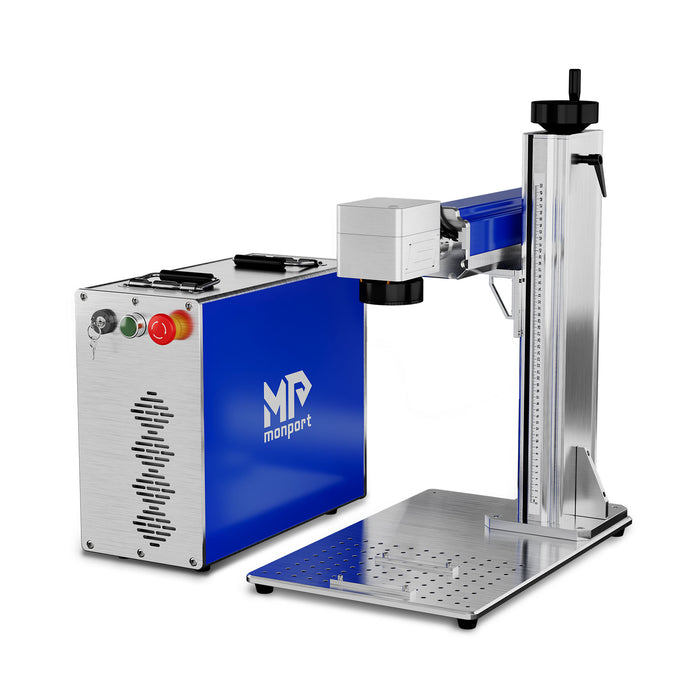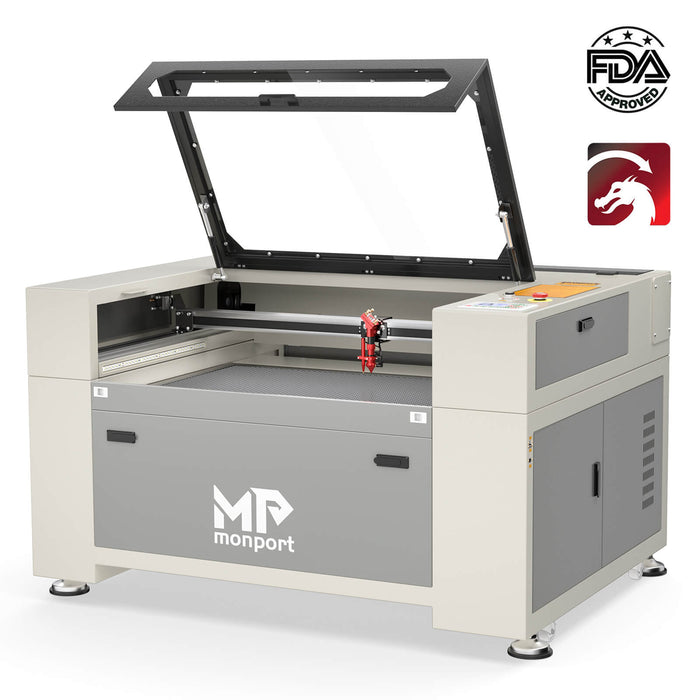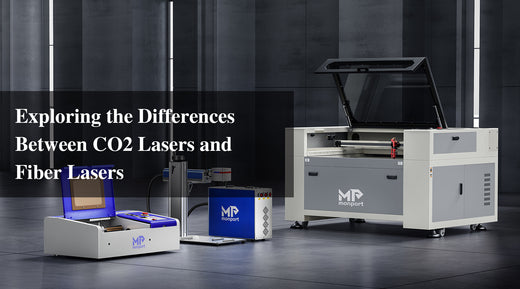Introduction
Fiber laser machine, CO2 laser machine, and diode laser are three different types of lasers used in various industrial and medical applications.
Fiber laser machine: This type of laser uses a fiber optic cable as the lasing medium. They are compact, efficient, and provide a high-quality beam. Fiber lasers are commonly used in metal cutting, welding, and marking applications.

CO2 laser machine: CO2 lasers use a mixture of carbon dioxide, nitrogen, and helium as the lasing medium. They produce high-power beams and are widely used in cutting, engraving, and marking on non-metallic materials such as wood, paper, and plastic.

Diode laser machine: Diode lasers use a semiconductor material as the lasing medium. They are compact, efficient, and low-cost. Diode lasers are used in a wide range of applications, including medical therapy, printing, and fiber optic communication.
Fiber Laser Machine VS. CO2 Laser Machine
Fiber lasers are more efficient, versatile, and compact, but also more expensive, while CO2 lasers are less expensive but less versatile and less efficient. Fiber lasers and CO2 lasers are both types of lasers, but they have some significant differences:- Wavelength: Fiber lasers typically emit light at a wavelength of 1-2 microns, while CO2 lasers emit light at a wavelength of 10.6 microns.
- Efficiency: Fiber lasers are more efficient than CO2 lasers and can produce higher power outputs.
- Size: Fiber lasers are typically smaller and more compact than CO2 lasers, as they require less complex optical systems to produce the laser beam.
- Cost: CO2 lasers are typically less expensive than fiber lasers, but fiber lasers have a lower cost of ownership due to their higher efficiency and lower maintenance costs.
- Materials: Fiber lasers are more versatile in terms of the materials they can work with, while CO2 lasers are mainly used for cutting non-metallic materials, such as paper, cardboard, and textiles.
- Applications: Fiber lasers are widely used in industrial applications, such as cutting and welding, while CO2 lasers are commonly used in cutting and engraving applications.
Materials CO2 Laser and Fiber laser Can Cut and Engrave
The materials that a CO2 laser or a fiber laser can cut and engrave depend on the specific properties of the laser. Here's a brief overview:
CO2 lasers: CO2 lasers are well-suited for cutting and engraving non-metallic materials such as paper, cardboard, textiles, and some types of plastic. They are not typically used for cutting metals.
Fiber lasers: Fiber lasers are highly efficient and versatile, making them suitable for cutting and engraving a wide range of materials, including metals such as steel, aluminum, and titanium. They are also commonly used for engraving materials such as plastic and glass.
It's important to note that the specific materials that a laser can cut or engrave will depend on several factors, including the laser's power, the thickness and composition of the material, and the desired end result. It's always a good idea to consult with a laser expert to determine the best laser for a specific application.
Compared Between from their laser power, Lifespan, speed, and price
Here is a comparison of the three types of lasers based on their laser power, lifespan, speed, and price:
Laser Power: Fiber lasers have the highest laser power, followed by CO2 lasers, and finally diode lasers, which have the lowest laser power.
Lifespan: Fiber lasers have a longer lifespan compared to CO2 and diode lasers, as they use solid-state technology and are less likely to be damaged by dust or debris.
Speed: Fiber lasers are also the fastest of the three types, with high beam quality and fast processing speeds. CO2 lasers are also relatively fast, while diode lasers tend to be slower.
Price: Diode lasers tend to be the most affordable option, followed by CO2 lasers. Fiber lasers are typically the most expensive of the three types.
It's important to note that these are general comparisons, and the specific characteristics of a laser will depend on the model and application. It's always a good idea to consult with a laser expert to determine the best laser for a specific application.
CO2 Laser Machine vs Fiber Laser Machine: Which Laser to Choose?
The choice between a diode laser, a CO2 laser, or a fiber laser will depend on the specific requirements of the application.
If cost is a primary consideration, diode lasers are typically the most affordable option. They are also small in size and low in power, making them suitable for applications such as consumer electronics and medical devices.
If versatility is important, fiber lasers are a good choice. They can be used for a wide range of materials, including metals, and are efficient and powerful.
If cutting non-metallic materials is the primary goal, CO2 lasers are a good option. They are well-suited for cutting paper, cardboard, and textiles, and are also relatively affordable.
Conclusion
Ultimately, the choice between a diode laser, a CO2 laser, or a fiber laser will depend on the specific requirements of the application, including cost, power, and versatility, among others. Monport offers CO2 lasers and fiber lasers for your different choice.








